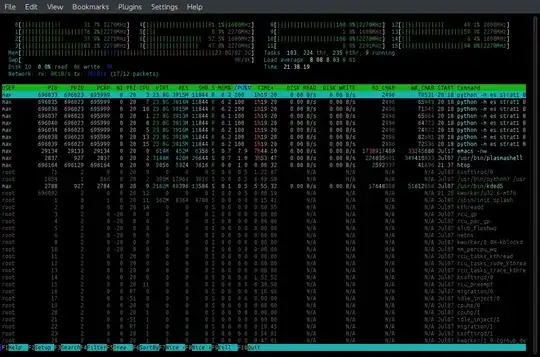The Intel Core i7-4600U Processor supports Turbo Boost technology. It has a base frequency of 2.10GHz and a Max Turbo Frequency of 3.30GHz. That means that,
- If you disable the Turbo Boost (in the BIOS setup menu), the CPU will work at 2.10GHz all the time.
- When Turbo Boost is enabled and only one of the cores is working, the CPU will work at a maximum of 3.30GHz.
- If Turbo Boost is enabled and all the cores are working, the CPU will work at 2.10GHz.
Obtaining current frequency
To determine if the Turbo Boost is activated and which is the current frequency, you can use cpupower frequency-info. For instance, for an old Intel Core i5-660 with Turbo Boost enabled, you will get the following.
$ cpupower frequency-info
analyzing CPU 0:
driver: acpi-cpufreq
CPUs which run at the same hardware frequency: 0
CPUs which need to have their frequency coordinated by software: 0
maximum transition latency: 10.0 us.
hardware limits: 1.20 GHz - 3.47 GHz
available frequency steps: 3.47 GHz, 3.33 GHz, 2.53 GHz, 1.87 GHz, 1.20 GHz
available cpufreq governors: conservative, ondemand, userspace, powersave, performance
current policy: frequency should be within 1.20 GHz and 3.47 GHz.
The governor "ondemand" may decide which speed to use
within this range.
current CPU frequency is 1.87 GHz.
cpufreq stats: 3.47 GHz:82,67%, 3.33 GHz:0,00%, 2.53 GHz:0,00%, 1.87 GHz:0,06%, 1.20 GHz:17,28% (3)
boost state support:
Supported: yes
Active: yes
25500 MHz max turbo 4 active cores
25500 MHz max turbo 3 active cores
25500 MHz max turbo 2 active cores
25500 MHz max turbo 1 active cores
Note that the information states the hardware limits (1.20 GHz - 3.47 GHz), the possible frequencies (3.47 GHz, 3.33 GHz, 2.53 GHz, 1.87 GHz, 1.20 GHz) and the current frequency (1.87 GHz). You may find the technical information of these frequencies at the Intel website.
Frequency when TurboBoost is disabled
Note the difference when you run the same command with Turbo Boost disabled: In the boost state support section, the values for Supported and Active are no. Here, the CPU will be at the nominal/minimal value (1.20Ghz) all the time.
$ cpupower frequency-info
analyzing CPU 0:
driver: acpi-cpufreq
CPUs which run at the same hardware frequency: 0
CPUs which need to have their frequency coordinated by software: 0
maximum transition latency: 10.0 us.
hardware limits: 1.20 GHz - 3.47 GHz
available frequency steps: 3.47 GHz, 3.33 GHz, 2.53 GHz, 1.87 GHz, 1.20 GHz
available cpufreq governors: conservative, ondemand, userspace, powersave, performance
current policy: frequency should be within 1.20 GHz and 3.47 GHz.
The governor "ondemand" may decide which speed to use
within this range.
current CPU frequency is 1.20 GHz.
cpufreq stats: 3.47 GHz:40,86%, 3.33 GHz:0,01%, 2.53 GHz:0,06%, 1.87 GHz:0,22%, 1.20 GHz:58,85% (493)
boost state support:
Supported: no
Active: no
25500 MHz max turbo 4 active cores
25500 MHz max turbo 3 active cores
25500 MHz max turbo 2 active cores
25500 MHz max turbo 1 active cores
You can disable the Turbo Boost using the BIOS or some Linux options/commands. The kernel support can be enabled/disabled using the /sys/devices/system/cpu/cpufreq/boost file.

/proc/cpuinfoshould also have a line that sayscpu MHZ: ...which is the current speed. The 2.1 after the@is the base speed (without turbo boost). – don_crissti Feb 20 '16 at 20:02cat /sys/devices/system/cpu/cpu0/cpufreq/cpuinfo_cur_freq(as root). – don_crissti Feb 20 '16 at 20:14